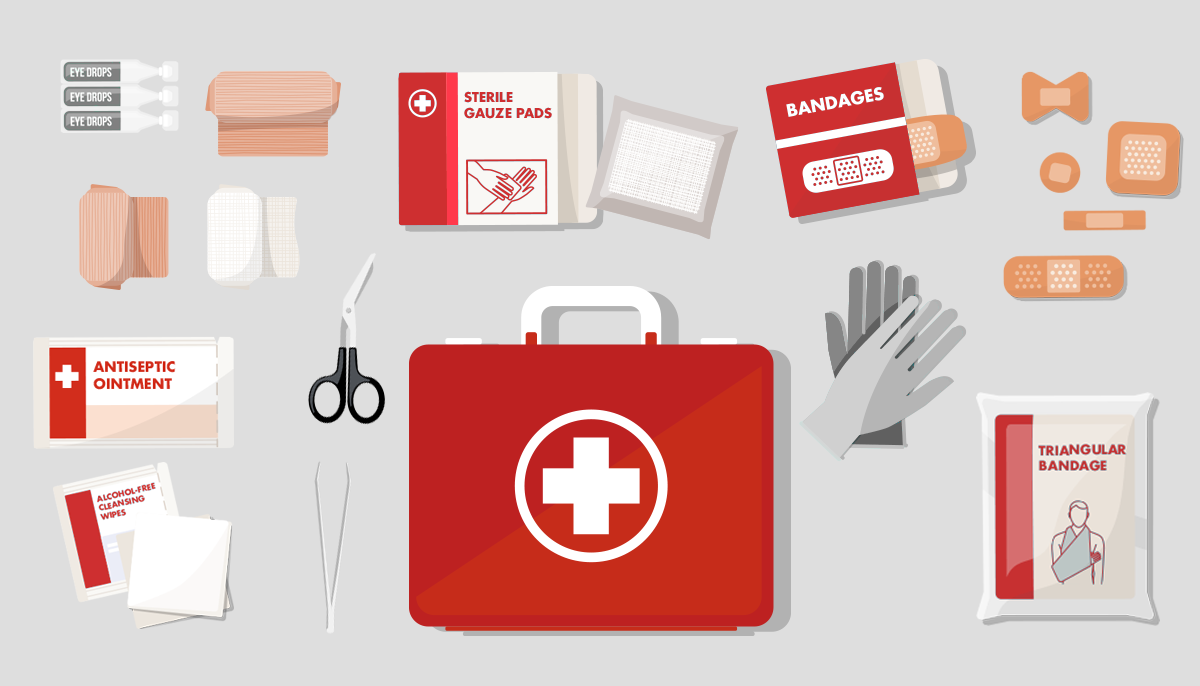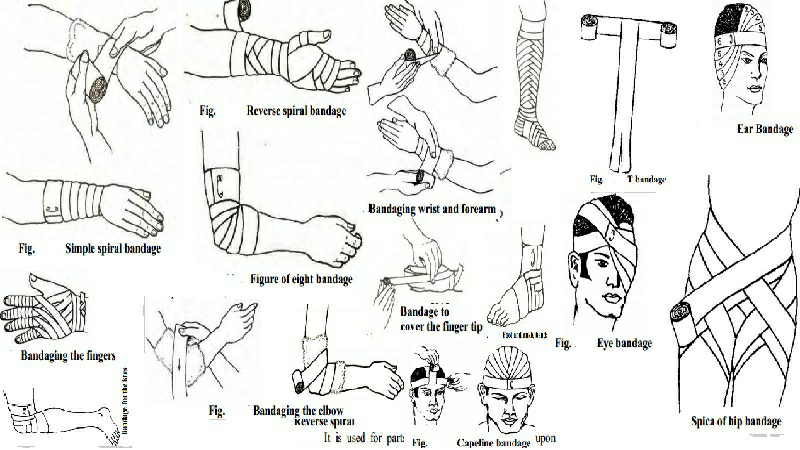FIRST AID
Introduction to first aid
At
any moment, you or someone around you could experience an injury or illness.
Using basic first aid, you may be able to stop a minor mishap from getting
worse. In the case of a serious medical emergency, you may even save a life.
That’s why it’s so important to learn basic first aid skills. To build on the information you learn here, considering taking a first aid course.
When you provide basic medical care to someone experiencing a sudden injury or illness, it’s known as first aid. In some cases, first aid consists of the initial support provided to someone in the middle of a medical emergency. This support might help them survive until professional help arrives.In other cases, first aid consists of the care provided to someone with a minor injury. For example, first aid is often all that’s needed to treat minor burns, cuts, and insect stings.
3 steps for emergency situations
1.
Check the scene for danger
Look for anything that might be dangerous, like signs of fire, falling debris, or violent people. If your safety is at risk, remove yourself from the area and call for help.If the scene is safe, assess the condition of the sick or injured person. Don’t move them unless you must do so to protect them from danger.
2.
Call for medical help, if needed
If
you suspect the sick or injured person needs emergency medical care, tell a
nearby person to call or the local number for emergency medical services. If
you’re alone, make the call yourself.
3. Provide care
If
you can do so safely, remain with the sick or injured person until professional
help arrives. Cover them with a warm blanket, comfort them, and try to keep
them calm. If you have basic first aid skills, try to treat any potentially
life-threatening injuries they have.
Remove
yourself from danger if at any point in the situation you think your safety
might be at risk.
In many cases, you can use an adhvsive bandages to cover minor cuts, scrapes, or burns. To cover and protect larger wounds, you might need to apply a clean gauze pad or roller bandages
To
apply a roller bandage to a wound, follow these steps:
1. Hold the injured area steady.
2. Gently but firmly wrap the bandage around the
injured limb or body part, covering the wound.
3. Fasten the bandage with sticky tape or safety pins.
4. The bandage should be wrapped firmly enough to stay
put, but not so tightly that it cuts off blood flow.
To
check the circulation in a bandaged limb, pinch one of the person’s fingernails
or toenails until the color drains from the nail. If color doesn’t return
within two seconds of letting go, the bandage is too tight and needs to be
adjusted.
If
you suspect that someone has a third degree burn call for medical help Seek professional medical
care for any burns that:
- cover a large area of skin
- are located on the person’s face, groin, buttocks, hands, or feet
- have been caused by contact with chemicals or electricity
To
treat a minor burn, run cool water over the affected area for up to 15 minutes.
If that’s not possible, apply a cool compress to the area instead. Avoid
applying ice to burned tissue. It can cause more damage.
Over-the-counter
pain relievers can help relieve pain. Applying lidociane or
alovera gel or cream can also reduce discomfort from
minor burns.
To
help prevent infection, apply an antibiotic ointment and loosely cover the burn with clean
gauze.
If
you see someone collapse or find someone unconscious, call for medical care. If
the area around the unconscious person seems safe, approach them and begin CPR.
Even
if you don’t have formal training, you can use hands-only CPR to help keep
someone alive until professional help arrives.
Here’s
how to treat an adult with hands-only CPR:
1. Place both hands on the center of their chest, with
one hand on top of the other.
2. Press straight down to compress their chest
repeatedly, at a rate of about 100 to 120 compressions per minute.
3. Compressing the chest to the beat of “Staying
Alive” by the Bee Gees or “Crazy in Love” by Beyoncé can help you count at the
correct rate.
4. Continue performing chest compressions until
professional help arrives.
For
some people, a bee sting is a medical emergency. If a person is having an
allergic reaction to a bee sting, call for medical help . If they have an epinephrine
auto-injector , help them find and use it. Encourage them to remain calm until
help arrives.
Someone
who’s stung by a bee and showing no signs of an allergic reaction can usually
be treated without professional help.
If
the stinger is still stuck under the skin, gently scrape a credit card or other
flat object across their skin to remove it. Then wash the area with soap and
water and apply a cool compress for up to 10 minutes at a time to reduce pain
and swelling
To
treat someone with a nosebleed, ask them to:
1. Sit down and lean their head forward.
2. Using the thumb and index finger, firmly press or
pinch the nostrils closed.
3. Continue to apply this pressure continuously for
five minutes.
4. Check and repeat until the bleeding stops.
If
you have nitrile of vinyl gloves, you can press or pinch their nostril closed
for them.
If
the nosebleed continues for 20 minutes or longer, seek emergency medical care.
The person should also receive follow-up care if an injury caused the
nosebleed.
When
your body overheats, it can cause heat exhaustion. If left untreated, heat
exhaustion can lead to heatstroke. This is a potentially life-threatening
condition and medical emergency.
If
someone is overheated, encourage them to rest in a cool location. Remove excess
layers of clothing and try to cool their body down by doing the following:
- Cover them with a cool, damp sheet.
- Apply a cool, wet towel to the back of their neck.
- Sponge them with cool water.
Call
medical help if they develop signs or symptoms of heatstroke, including any of
the following:
- nausea or vomiting
- mental confusion
- fainting
- seizures
- a fever of 104°F (40°C) or greater
If
they’re not vomiting or unconscious, encourage them to sip cool water or a
sports drink
Conclusion

Learning different
ways to help out in an emergency situation is very important to know; now that
you are in high school and as you get older it is extremely also beneficial for
the rest of your life for you to know the different first aid skills. People always
get in different accident everyday, every hour and minute. You may never know
if you would ever be in that situation , form a person getting hint by a car to
some kids playing on the playground and all of a suddent they are unconscious.
You can can be a hero by learning the basics; helping out a person in this case
like that.













👍
ReplyDelete👍✌❤
ReplyDelete